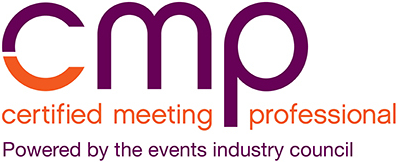5 tips for protecting company confidential information at paperless events
![]() Print this Article | Send to Colleague
Print this Article | Send to Colleague
More and more events are going paperless, and it’s easy to understand why: Paperless meetings allow you to reduce printing (and environmental) costs, they are more forgiving for last-minute edits, and participants appreciate the convenience of having the information they need on their devices. That said, paperless events can increase your cyber risks. Fortunately, there are practical ways to mitigate that risk.
Protecting company confidential information
Events can be an easy gateway for corporate espionage: Confidential information may be available on unsecured networks, and data such as financial information, business projections and operations manuals may be shared with participants. Paper-based meetings have the advantage of being able to track and manage who had access to reports, and these could be collected and shredded at the end of the event. Here are a few simple steps to make it more difficult for hackers to access your company confidential information at your events:
1. Don’t display detailed confidential information if you don’t need to. Unless required, avoid posting full detailed financial information on slides. It’s easy to take images and circulate them. As an alternative, use an image to represent the data, and report on it verbally. Although it doesn’t eliminate all risks, it can help reduce them.
2. Use a secure board app for sharing documents. Board meeting discussions often require members to access confidential data. To share these documents, look for an app that requires a password to sign-in every time, and where you can revoke access to the documents after a board member’s term has expired.
3. Delete files from event laptops. If you are using laptops provided by an audio-visual or event technology supplier, confirm that the files have been deleted at the end of the event. And, don’t forget to confirm that they have up -to-date security software! Alternatively, use your own equipment connected to the projector in the room.
4.Have a social media policy, and share this with your participants. We love to have participants share information on social media, but there are times when this can result in confidential information being released. Help participants to know what should be kept confidential by providing a social media policy, informing them of the policy, and reminding them in any specific sessions where phones and devices need to be turned off.
Arrange for a secure, password-protected network. Open networks, often available for free in public spaces, are vulnerable to hackers. Arrange for a password-protected network for your event, and take measures to protect this password. As an example, post the password after security check-points, rather than in exterior hallways. During the event, check for any rogue wi-fi spots that may have appeared. For increased security, encourage your participants to also use a virtual private network (VPN) to access confidential information.
Prepared by: Brandt Krueger, Owner, Event Technology Consulting
Mariela McIlwraith, CMP, CMM, MBA, Director, Industry Advancement, Events Industry Council
Michael Owen, Managing Partner, EventGenuity, LLC

